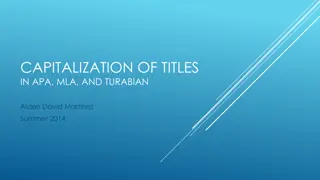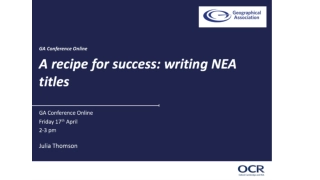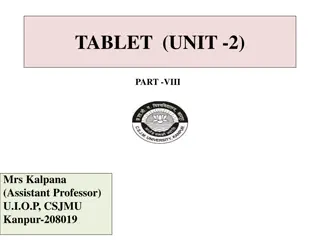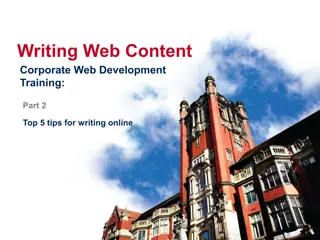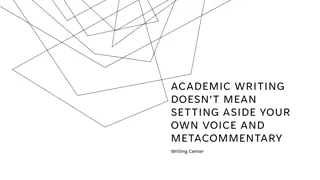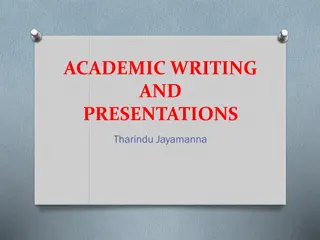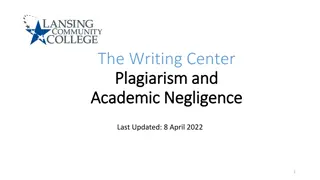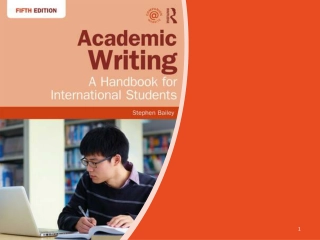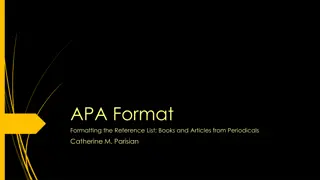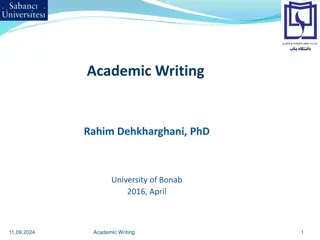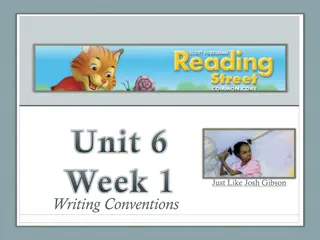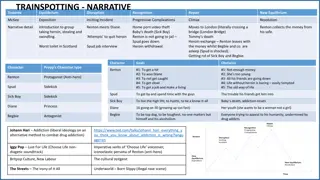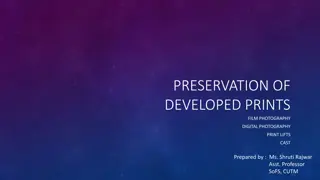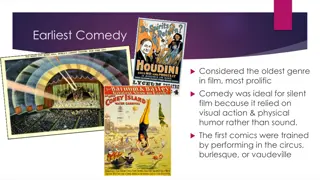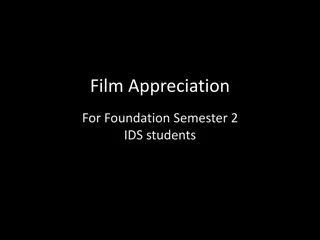Proper Way to Include Film Titles in Academic Writing
When mentioning film titles in academic writing, it is essential to follow specific guidelines. Initially, include the title, year of release, and director's name. For example, "Flower Drum Song (1961) Dir. Henry Koster." Subsequently, you can either underline or italicize the title, such as Flower Drum Song. This approach ensures consistency and clarity in citing film titles within your academic work.
Download Presentation

Please find below an Image/Link to download the presentation.
The content on the website is provided AS IS for your information and personal use only. It may not be sold, licensed, or shared on other websites without obtaining consent from the author. Download presentation by click this link. If you encounter any issues during the download, it is possible that the publisher has removed the file from their server.
E N D
Presentation Transcript
How to list film titles in your academic writing:
How to list film titles in your academic writing: 1. The first time you mention a title, list the title, year of release, and name of director:
How to list film titles in your academic writing: 1. The first time you mention a title, list the title, year of release, and name of director: Flower Drum Song (1961) Dir. Henry Koster
How to list film titles in your academic writing: 1. The first time you mention a title, list the title, year of release, and name of director: Flower Drum Song (1961) Dir. Henry Koster Flower Drum Song (1961) Dir. Henry Koster
How to list film titles in your academic writing: 1. The first time you mention a title, list the title, year of release, and name of director: Flower Drum Song (1961) Dir. Henry Koster Flower Drum Song (1961) Dir. Henry Koster 2. After that, under or italic the title:
How to list film titles in your academic writing: 1. The first time you mention a title, list the title, year of release, and name of director: Flower Drum Song (1961) Dir. Henry Koster Flower Drum Song (1961) Dir. Henry Koster 2. After that, under or italic the title: Flower Drum Song or Flower Drum Song
ASIAN AMERICANS IN MEDIA Week 6: Notions of Community, I Fall of The I Hotel
Key Terms: Asian American Movement Oral history An Asian American cinema Manilatown / Manongs / bachelor society
The Fall of The I-Hotel (1977-83, revised in 1993) Dir. Curtis Choy
The International Hotel (I-Hotel) was built in 1907, and was located at the corner of Kearny and Jackson Streets in San Francisco.
This area was also known as Manilatown The I-Hotel was a low-cost residential hotel. The monthly rent was about $50 There were 196 tenants living in the building in 1968, when the eviction notices were served Most of the residents were elderly Filipino immigrant men, known as Manongs
Manong: Manong is an Ilokano word meaning older brother . The manongs immigrated during the 1920s and 30s and were the first wave of Filipinos to come to the United States.
The manongs came at one of the worst times for the US economy. It was the start of the Great Depression and the continuance of mistreatment towards the immigrant Filipinos. Many places had put up signs saying, No Filipinos Allowed.
In addition, anti- miscegenation laws had been passed in order to prevent interracial marriage, which caused a lot of violence and arrests of Filipinos who were found intermingling with white American women.
Manongs farm workers were one of the first to organize politically. A group of Filipino farmworkers in Delano instigated the Delano Grape Strike of 1965 which brought about the creation of the United Farm Workers Union (UFW)
Kearny Street was also a center for Asian American political organizing and cultural production in the 1970s
Discussion Questions: How do you think the eviction of the I-Hotel is depicted in the film?
Discussion Questions: How do you think the eviction of the I-Hotel is depicted in the film? How does the filmic language influence the way we experience and see this eviction?
Discussion Questions: How do you think the eviction of the I-Hotel is depicted in the film? How does the filmic language influence the way we experience and see this eviction? Do you think the representation was objective ?
Discussion Questions: How do you think the eviction of the I-Hotel is depicted in the film? How does the filmic language influence the way we experience and see this eviction? Do you think the representation was objective ? Is objectivity possible or desirable in political documentaries?
I-Hotel Today Photo taken in 2008
In 1994 the site was acquired by the Roman Catholic Archdiocese of San Francisco and later sold to Chinatown Community Development Center. In 2003, construction began on the new I-Hotel, and the building was completed on August 26, 2005. The new building contains 105 apartments of senior housing, where the two remaining living residents of the original I-Hotel now live.
The new building also contains a ground- floor community center and a historical display commemorating the original I-Hotel.
Discussion Question: Based on the films we have watched in class these two weeks, sketch out the common themes and approaches of early Asian American independent films:
Discussion Question: Based on the films we have watched in class these two weeks, sketch out the common themes and approaches of early Asian American independent films: Investigation of Asian American history
Discussion Question: Based on the films we have watched in class these two weeks, sketch out the common themes and approaches of early Asian American independent films: Investigation of Asian American history Oral history / personal memory
Discussion Question: Based on the films we have watched in class these two weeks, sketch out the common themes and approaches of early Asian American independent films: Investigation of Asian American history Oral history / personal memory Non-traditional filmic language
Discussion Question: Based on the films we have watched in class these two weeks, sketch out the common themes and approaches of early Asian American independent films: Investigation of Asian American history Oral history / personal memory Non-traditional filmic language Documentary / ethnography
Discussion Question: Based on the films we have watched in class these two weeks, sketch out the common themes and approaches of early Asian American independent films: Investigation of Asian American history Oral history / personal memory Non-traditional filmic language Documentary / ethnography Anti-slick
Discussion Questions: How does Renee Tajima define Asian American cinema?
Discussion Questions: How does Renee Tajima define Asian American cinema? How does your filmic example fit into her framework?
Discussion Questions: How does Renee Tajima define Asian American cinema? How does your filmic example fit into (or not fit into) her framework?


